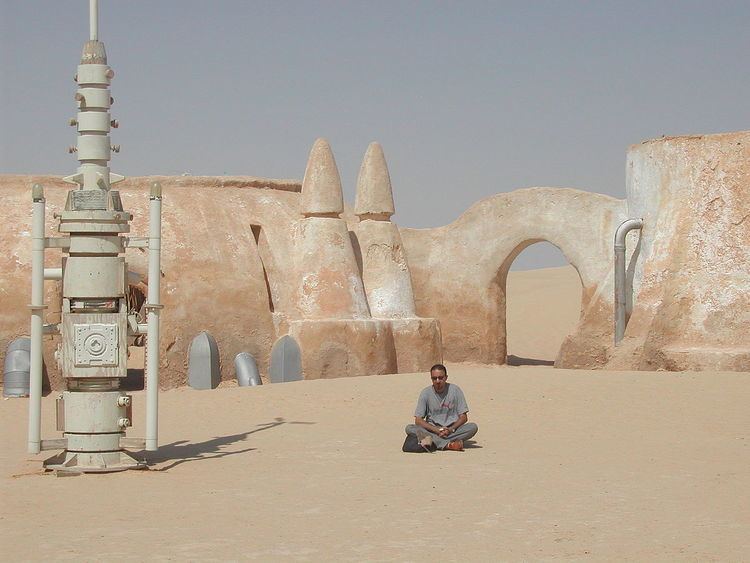 | ||
Architecture in Star Wars includes the cities, buildings, ships, and other structures of the fictional Star Wars universe as described and depicted in books, movies, comics, and cartoons. Architects Journal ranked the top 10, including the Death Star and the Jedi Temple.
Contents
Comparing the urban and natural environments pictured in Star Wars, Mark Lamster wrote that the cities are places of danger and corruption, while the forces of good find sanctuary in the natural world. He also describes the "retro-futurist" cities in the series as being in between those extremes and places of "great beauty but dubious moral character." He attributes the ambivalence towards urbanity to series creator George Lucas' own feelings about cities and urban environments.
The settings of the movie have generally been praised, but one author took exception to the "anachronistic period architecture and statuary" of Star Wars: Episode I – The Phantom Menace, saying it improperly associated third world buildings with conceptions of innocence and the primitive in a way that was discriminatory and demeaning.
Planet settings
Luke Skywalker is first seen in Star Wars Episode IV: A New Hope living with his adoptive parents in a "complex of caves and domed structures" on Tatooine, filmed in the Tunisian desert town of Matmata. The end of the first movie was shot in the Guatemalan rain forest where a celebration with rebel allies takes place in a caved area (a scene said to be borrowed from Leni Riefenstahl's 1935 Nazi propaganda film Triumph of the Will). The exotic locales provide scenery that is unfamiliar to "all but a few experts in non-western architecture", providing the films with fantastic settings that could still be believable.
Urban planning
Three architecture and planning students noted that the "latest" (1999) Star Wars movie (The Phantom Menace) offered "a variety of urban development options" in a San Diego Union-Tribune story headlined "How would you like to live on a Star Wars' world?" The article included illustrations of Coruscant ("completely covered by development" and "surrounded by mile-high skyscrapers"), including views from the Jedi Council building, and the city of Theed (inspired by an 18th-century palace near Naples, Italy). On Coruscant, "development extends miles below the surface of the city and up into the clouds."
The "urban future" has also been depicted in Blade Runner where "the setting is a grimy, crime-ridden Los Angeles in the 21st century". The architecture of Star Wars may also have been influenced by Stanley Kubrick's 2001: A Space Odyssey. The designs continued Lucas' work from his first feature film, THX 1138, which featured a claustrophobic, Orwellian "subteranean world of black-and-white spaces" where the population is subdued with drugs and kept under constant surveillance.
Ships
The battle cruisers featured in Star Wars have been described as examples of "Suprematist architecture".
Real world buildings that mirror Star Wars
The San Francisco Federal Building designed by Thom Mayne has been compared to the Jawa Sandcrawler featured in Star Wars Episode IV: A New Hope. The ING headquarters building (in Amsterdam, Netherlands) has been described as looking like something out of Star Wars that could "move forward on its legs". Conversely, the Trinity College, Dublin, Long Room Library is thought to be the basis for the Jedi Academy Library in Star Wars: Episode II – Attack of the Clones.
